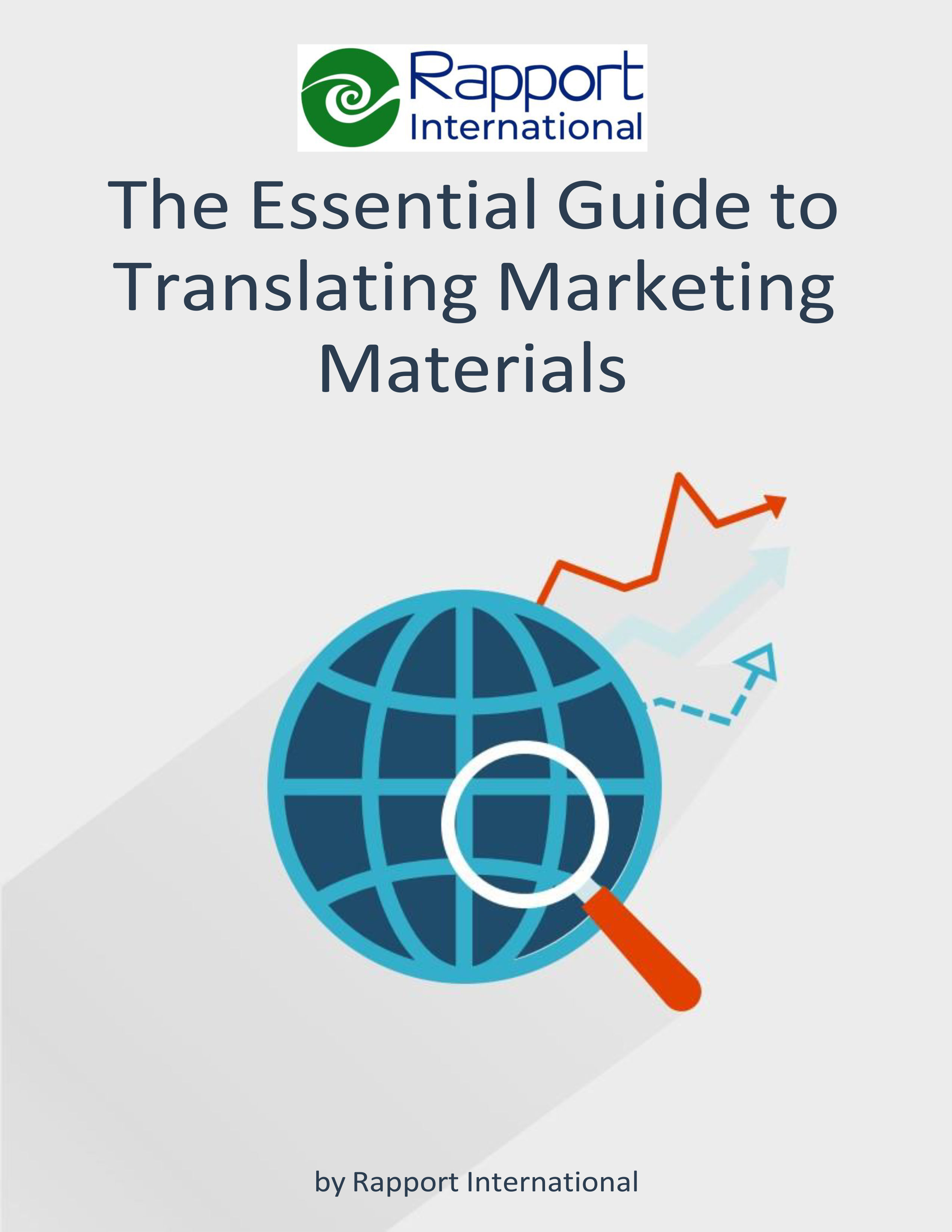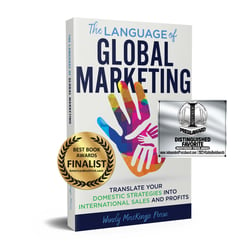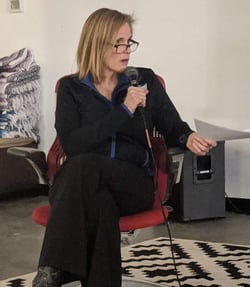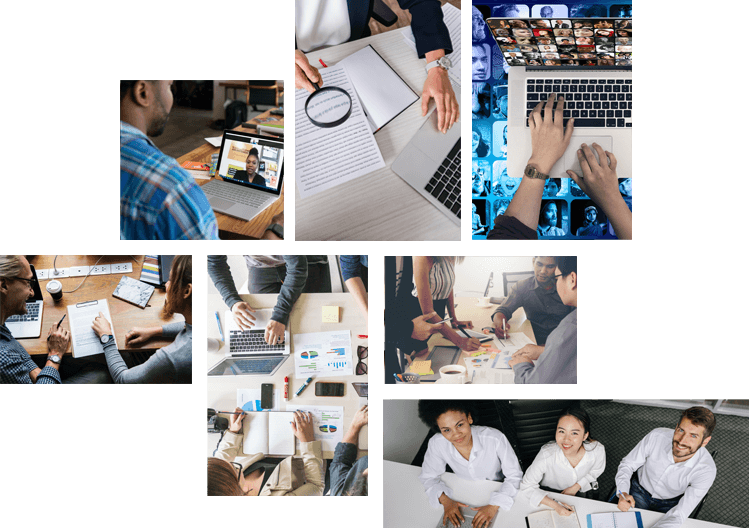Table of contents
Don't have time to Read the Entire Guide Now?
Fill out the form for a downloadable PDF version of the guide you can reference later.
Whether you need your website, advertising materials, product manuals, instructions, product packaging, branding messages, brochures, catalogs, presentations, or any other marketing materials translated, you need to ensure that your message is correct and consistent in every language and across all materials.
Writing for Marketing Translation
The First Step
Step #1 in getting the best translation for your marketing materials is to ensure that the original copy is the best it can be. The writing must be concise, clear, written in proper English, and finalized before it goes to your professional language services company.
- Use Precise Language: The best translations result from copy that is clear and concise. Write in proper English and avoid ambiguity in the wording and meaning of your message. While messages with double meanings may work well in US English, they generally don't translate well or resonate with other cultures. It's best to keep the message and the copy on point and precise.
- Don't Use Humor, Slang, Idioms and Double Meanings: What one group finds humorous or pithy often falls flat with other cultures. It's best to keep humor, puns, idioms, and slang out of your slogans and advertising. Even when marketing in a single country, slang and humor often won't translate to different areas. Think about the slang use for the word "wicked". Where we are located, in New England, "wicked" is a term used to mean "very" or "awesome". But in other parts of the U.S., "wicked" means "bad" or "evil."
- Leave Room: Translation is not a one-for-one swap of words. Often, a translation is 20-30% longer than the original copy. If you need that copy to fit on a product package or a brochure, you need to account for this expansion when you write the English version to avoid layout issues.
- Be Consistent: Repeated copy on all your marketing materials will not only provide a consistent message but also help you save costs when translating to other languages. Repeated copy can be translated once and then reused to save time and money in the translation process.
- Finalize First: Make sure the copy submitted to your translation provider is the final copy. Editing once the translator is working on the material can result in delays or errors, and it complicates project management by making the versions more difficult to track. Avoid this by always waiting until the copy is finalized before sending it for translation.
Culturally Appropriate Marketing Translation
Beyond Language
Choosing the right language is not the only consideration when expanding into a foreign market. You also need to decide whether to make your marketing materials universal to all speakers of a language worldwide or just a specific region. You must also ensure that your visual materials are culturally appropriate and don't send the wrong message, and you must ensure that your brand and message will be well received.
- Globalize or Localize: Is your target audience every Spanish speaker in the world or Spanish speakers in Spain? The answer to that question will help you decide if you want globalization or localization as part of your translation process. Many companies choose to globalize their brand name and localize their message and websites to target specific regions.
- Appropriate Visuals: When translating your marketing materials, consider more than just the words. Your advertisements should depict people, settings, and appropriate activities for the culture you are targeting. For example, if you are marketing your product or service in the Middle East, you don't want white models and actors in your advertisements. Matching your visuals with the market will improve your product or service's reception.
- Color Meanings: Colors often have different feelings and meanings in different cultures. For example, in U.S. English, we associate the color green with feelings of envy or jealousy. This is also true in Spanish, Dutch, Norwegian, Finnish, and several other languages. But in French and German, you can be both green and yellow with envy. Always research your brand colors before launching in a new market to ensure they do not have a negative connotation.
- Generalize: General language in messaging makes it easier to use across cultures and regions. Messages that are very specific to a place or a custom will have to be edited or re-created for other markets, causing more work and higher costs.
Know the Terminology
Getting the Right Type of Marketing Translation
We define some terms you'll hear when shopping for a professional marketing translation agency. Knowing the differences can help you make the best decisions when translating your marketing materials.
- Transliteration: The conversion of words or letters from one alphabet to another. This is generally a letter-to-letter conversion with no regard for sound or meaning. Think of changing a Russian word from their alphabet to the English alphabet but keeping the word in the Russian language. For example, "hello" in Russian script is Привет, but it is transliterated to English script as privet.
- Translation: Translation is the conversion of written text from one language into another while maintaining the meaning of the original text. This is the most basic form of converting materials from one language to another.
- Globalization: Translating materials into one language to be used globally for all speakers of that language.
- Localization: Translating materials into another language while targeting a specific culture that speaks that language. This can mean a particular country or region of a country. Localization would consider currency, traditions, norms, references, local figures, etc.
- Transcreation: One step beyond localization. The materials are not simply translated; the professional translator takes the ideas and messages of the original content and creates new content in the target language to convey the same message and feeling.
- Transcription: This is the conversion of spoken words to written materials. Most often used for video and audio files in new markets. When done in conjunction with translation, the audio is transcribed in the original language first, then translated into the target language.
- Crowdsourced Translation: This is a recent practice of publishing content and messages on the Internet and asking readers around the world for translations. It has definite drawbacks, including a lack of control, no confidentiality of information, and no knowledge of the experience or expertise of the people performing the translations.
- Interpretation: The conversion of spoken words from one language into another that is also spoken. This is often used interchangeably with "translation," but they are not the same thing.
Quality Translation
Getting the Highest Quality Services
“How do I know my translation is accurate and correct if I can’t speak or read the target language?” This is the question we hear most often as a professional translation agency. Here are some things methods for ensuring the quality of your translation.
Translation
- Proofreading: Every translation includes a proofreading step, during which the original translation professional reviews the work for accuracy and typos to ensure that the words and meaning are captured in the target language.
- Client Review: We advise our clients to conduct an independent review with either an internal employee or another resource fluent in the target language. If the client's reviewer has questions, they are sent to the original translator, who will either make the suggested changes if they agree or pose questions to the client for clarification if they do not agree with the edits.
- Editing: This is an add-on service available to all clients. An assigned translator translates the material and then sends that translation and the original materials to a second translator for editing. The editor seeks clarification and suggests edits to the original translator. When the two do not agree on an edit, they discuss it and seek clarification from the client when necessary. This two-step process helps solidify the quality of the translation.
- Back Translation: This process involves translating materials from the source to the target language and then giving the translated materials to a second translator to have them translated back into the source language. Then, the original document and the back translation are compared for inconsistencies. The inconsistencies are addressed with the client for clarification. This is often used in regulatory environments for accuracy, not generally for marketing material translations.
Other Services
- DTP: Full-service marketing translation agencies will provide desktop publishing by experienced foreign language DTP professionals. Knowing how to layout a foreign language comes with experience and familiarity with that language and its grammar. DTP can be done in existing files to change the language appropriately or from scratch when source language files are unavailable.
- Brand Name Testing: As a marketing translation specialist, we provide message and brand testing in foreign markets. Testing ahead of time will help prevent your product or service from becoming one of those funny translation goofs all over the internet.
- Multilingual Chat: As you start reaching foreign audiences, they will want the same level of customer service as your English-speaking customers. Multilingual chat services are becoming the newest gold-star service for companies that do business on the web.
- Telephone Interpreting: In addition to online customer service in foreign languages, telephone customer service is available in many languages.
Website Translation
Reaching Global Markets
The internet has made the world smaller and provided global opportunities to businesses that would otherwise not have considered working on a global scale. Translating your website and SEO is the quickest path to maximizing your international success.
Steps for Website Translation:
- Set Goals: What are your objectives? Do you need to localize or globalize? Who are your targets? Define your objectives before contacting your website translation professional. This will help them develop a workable strategy for your website translation project.
- Make a Plan: A professional language service provider will work with you to create a plan to help you reach your goals. Narrowing down and consolidating the pages for translation will simplify the process and save costs compared to translating your entire site, which is often unnecessary. Read about pricing for translation to help with the planning process.
- Be Visible: Have your language service agency do some keyword research in your target markets, optimize your SEO, and translate it so that it can be found in those markets.
- Translate: Finally, work with your agency to automate the translation process as much as possible to keep your website up-to-date and translate your changing content to attract leads and generate interest in your target markets.
Rapport International specializes in multilingual communications, providing language translation and interpretation services that are accurate and culturally appropriate. We use the right voice and the correct terminology to avoid liability, customize services to your needs, and deliver on time and within your budget. With our 100% satisfaction guarantee, you can trust that it’s done right. Contact us today if you would like more information or to get a free quote.






